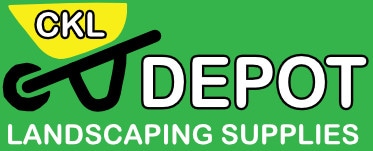Logo design
Logo design is the process of creating a visual representation of a brand or business. A logo serves as a visual identity that helps to establish recognition, differentiate from competitors, and convey the essence of a company’s values, personality, and purpose. Here’s an overview of the key aspects involved in logo design:
- Purpose: A logo aims to communicate the core identity and message of a brand in a concise and memorable way. It serves as a visual symbol that represents the company’s values, mission, and offerings.
- Research and Conceptualization: The logo design process begins with research about the brand, its target audience, industry, and competitors. Designers gather insights to understand the unique selling propositions and brand personality. From there, they generate ideas and concepts that align with the brand’s vision.
- Elements of a Logo:
- Typography: The choice of fonts conveys the tone and personality of the brand. It can be bold, elegant, playful, or professional.
- Colour: Colours evoke emotions and carry symbolism. Selecting appropriate colours helps in creating a visual identity that aligns with the brand’s values and resonates with the target audience.
- Iconography/Graphic: Some logos incorporate icons or graphic elements that represent the brand visually. These can be abstract shapes, symbols, or illustrations that reinforce the brand’s identity and message.
- Composition: The arrangement and balance of the logo’s elements play a crucial role in creating an aesthetically pleasing and harmonious design. This includes considerations such as spacing, alignment, and proportion.
- Iteration and Refinement: Designers create multiple logo variations based on the initial concepts. These variations undergo refinement, feedback, and revision stages to ensure they meet the client’s requirements and effectively represent the brand.
- Versatility: A logo should be adaptable to different mediums and sizes, from digital platforms to print materials. It needs to retain its clarity, legibility, and impact whether displayed on a website, business card, or billboard.
- Brand Guidelines: Once the final logo design is approved, brand guidelines are developed. These guidelines outline the proper usage of the logo, including colour specifications, size restrictions, clear space, and any accompanying visual elements or secondary logos.
- Longevity: A well-designed logo has longevity and can withstand the test of time. It should be able to evolve and adapt as the brand grows, without losing its core identity.
- Website Header: Logos often appear prominently at the top of a website, usually in the header section. They serve as a visual anchor, reinforcing the brand identity and providing a clickable link to return to the homepage.
- Favicon: A favicon is a small icon displayed in the browser tab next to the page title. Logos can be adapted into favicon versions, making it easier for users to identify and recognize a website when multiple tabs are open.
- Mobile App Icons: Logos are essential elements of mobile app icons. They are displayed on users’ home screens and app stores, serving as the primary visual representation of the app.
- Social Media Profiles: Logos are used as profile pictures or avatars across various social media platforms, such as Facebook, Twitter, Instagram, LinkedIn, and YouTube. They enhance brand consistency and help users quickly identify and connect with the brand’s social media presence.
- Email Signatures: Including logos in email signatures adds a professional touch and reinforces brand identity in all communication with customers or clients.
- Online Advertisements: Logos are incorporated into online advertisements, such as banner ads or sponsored content, to maintain brand consistency and create recognition among viewers.
- E-commerce Websites: Logos are prominently displayed on e-commerce websites, often in the header or navigation bar, to establish brand identity, build trust, and enhance the overall visual appeal of the online store.
- Blog or Article Branding: Logos are commonly used in blogs or articles to establish brand identity and reinforce the author’s affiliation with a specific website or organization.
- Video Intros and Watermarks: Logos can be incorporated into video intros or used as watermarks to protect content and maintain brand visibility when videos are shared online.
- Online Directories and Listings: Logos are utilized in online directories, business listings, or review platforms to enhance brand recognition and stand out among competitors.
- Digital Presentations and Slides: Logos can be incorporated into digital presentations, slides, or PDF documents to maintain brand consistency and provide visual reinforcement of the presenting organization.
- Scalability: Vector file formats, such as AI (Adobe Illustrator), EPS (Encapsulated PostScript), or SVG (Scalable Vector Graphics), are resolution-independent. This means they can be scaled up or down without losing quality or becoming pixelated. Whether you need to display your logo on a small business card or a large billboard, a vector file ensures that your logo remains sharp and clear at any size.
- Versatility: Vector files allow for easy adaptation and flexibility across different mediums and applications. Whether you need to print your logo on promotional materials, emboss it on merchandise, or display it on a website, a vector file can be easily adjusted and customized to fit the specific requirements of each medium without compromising the quality or integrity of the design.
- Professional Printing: If you plan to work with professional print vendors for items like banners, brochures, or signage, they often require vector files to ensure the best print quality. Vector files provide precise details and colour information, enabling printers to reproduce your logo accurately and maintain consistency across various printed materials.
- Logo Modifications: At some point, you may need to make modifications or updates to your logo. Having a vector file makes it easier for designers or marketing professionals to edit the logo’s elements, such as colours, shapes, or text, without starting from scratch. It allows for efficient and accurate logo adjustments while preserving the overall integrity of your brand identity.
- Brand Consistency: A vector file ensures that your logo remains consistent across different platforms and marketing materials. By using the same vector-based logo file, you can ensure that the colours, proportions, and design elements are accurately reproduced, regardless of the size, resolution, or technology used.
- Collaboration and Compatibility: Vector files are widely supported by design software and can be easily shared with other designers, agencies, or collaborators. Whether you’re working with an in-house design team or outsourcing design projects, providing a vector file ensures compatibility and ease of collaboration.
Having a vector file format of your logo is essential for maintaining the quality, versatility, and consistency of your brand identity. It empowers you to use your logo across various mediums and sizes, facilitates professional printing, and allows for efficient modifications when needed.
Remember, a logo is just one part of a broader brand identity system, which includes other visual elements such as typography, colour palettes, and graphic elements. A cohesive and consistent brand identity helps establish brand recognition and build a strong connection with the target audience.
At New Phase Marketing Intelligence, we combine creativity, strategic thinking, and a deep understanding of branding to create logos that are visually appealing, memorable, and representative of a brand’s essence.
Below are some examples of logos we have designed.





